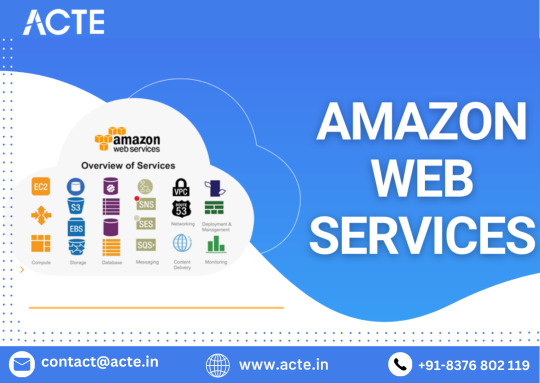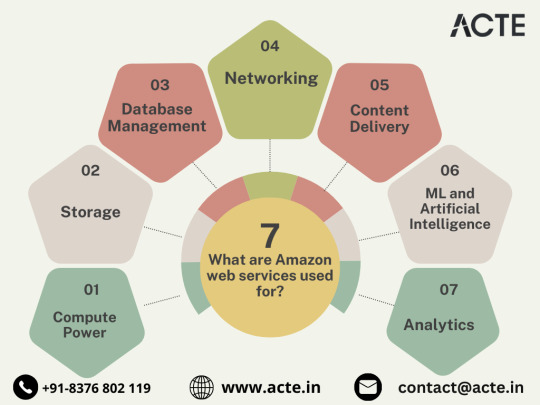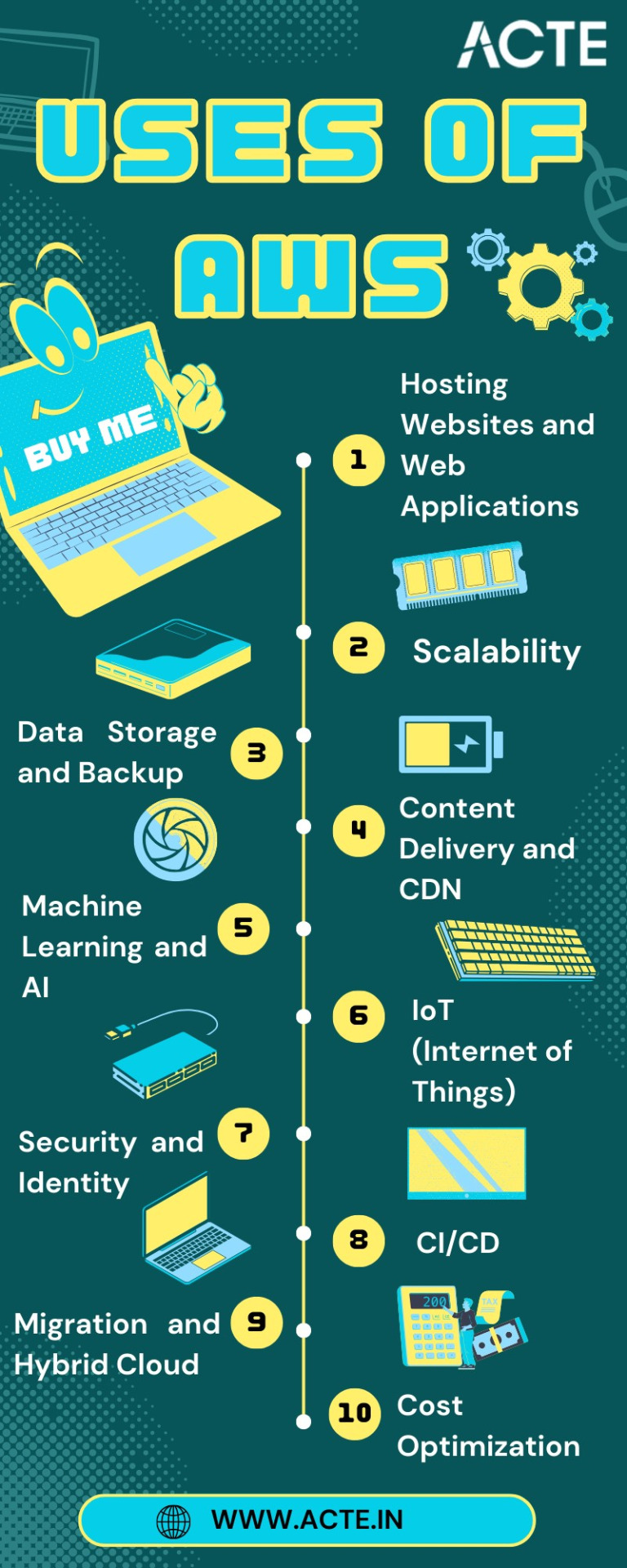#Amazon CloudFront
Explore tagged Tumblr posts
Text
This blog post dives into the world of Round-Trip Time (RTT) and its impact on network performance. It explains how RTT affects user experience and outlines actionable strategies to optimize your network for faster data transfer and smoother operation. You'll learn about the factors that contribute to latency, along with effective techniques to reduce RTT and improve overall network efficiency. Additionally, the post explores how Amazon CloudFront can be leveraged to achieve significant performance gains.
0 notes
Text
#AWS#AWS Cloudformation#Cloudformation#AWS Lambda#Lambda#AWS Certificate Manager#Certificate Manager#ACM#Lambda@Edge#AWS WAF#WAF#AWS Secrets Manager#Secrets Manager#Amazon S3#S3#Amazon CloudFront#CloudFront#Custom Resources#Custom Resource#Cross-Region#Cross Region#CI/CD#DevOps
0 notes
Text
Amazon CloudFront - Content Delivery Network

Deliver your audio and video content using AWS CloudFront worldwide quickly and securely using this a globally-connected network for content delivery.
0 notes
Text
15. Was sind die Top-AWS-Services für Unternehmen?: Hallo Manuel! Der Titel des Blog-Beitrags lautet: "Die Top-AWS-Services für Unternehmen: Wie MHM Digitale Lösungen UG Ihnen bei der Auswahl hilft".
#AWS #CloudServices #AmazonEC2 #AmazonS3 #AmazonRDS #AmazonVPC #AmazonCloudFront #AWSLambda #AmazonECS #AmazonElasticBeanstalk #AWSGlue #AmazonKinesis - Welche AWS-Services helfen Unternehmen, ihre digitale Transformation voranzutreiben? Lerne mehr darüber im MHM Digitale Lösungen UG Blog-Beitrag!
Amazon Web Services (AWS) bietet Unternehmen eine breite Palette an Cloud-Computing-Services, um ihnen dabei zu helfen, digitale Lösungen zu erstellen und zu implementieren. Unternehmen können aus einer Vielzahl an Services wählen: von Computing über Datenbanken und Netzwerkinfrastruktur bis hin zu Entwicklungs-Tools. Während es schwierig ist, die richtige Auswahl zu treffen, kann die MHM…
View On WordPress
#Amazon CloudFront#Amazon ECS#Amazon Elastic Beanstalk#Amazon RDS#Amazon S3#Amazon VPC#AWS Glue und Amazon Kinesis.#AWS Lambda#Hier ist deine Liste mit den Top-AWS-Services für Unternehmen: Amazon EC2
0 notes
Text
Boosting Performance: CloudFront KeyValueStore Optimization

You may safely distribute both static and dynamic content with fast transfer speeds and minimal latency by using Amazon CloudFront. You can handle millions of requests per second and latency-sensitive customizations with CloudFront Functions. CloudFront Functions, for example, can be used to rewrite URLs, authorize requests, normalize cache keys, and change headers.
AWS are pleased to present CloudFront KeyValueStore, a safe, low-latency global key value datastore that can be accessed readly from within CloudFront Functions. This feature enables highly customized logic to be implemented at CloudFront edge locations.
In the past, configuration data had to be included directly into the function code. For instance, information for choosing which URL to send the viewer to when a URL needs to be redirected. Every tiny change in configuration when embedding it with the function code necessitates a code change and a redeployment of the function code. There is a chance that code will be accidentally altered when new lookup additions need updating and deploying code. Additionally, since the maximum function size is 10 KB, many use cases will struggle to fit all of the data within the code.
You can now update the function code and the data associated with it separately using CloudFront KeyValueStore. As a result, function code is made simpler and data updates are made simple without requiring code modifications to be deployed.
Let’s examine how this functions in real life.
Building a key value store for CloudFront
You select Functions from the navigation pane in the CloudFront dashboard. Then now you select Create KeyValueStore under the KeyValueStores menu.
This allows you to import key-value pairs into an Amazon Simple Storage Service (Amazon S3) bucket from a JSON file. If you want to start with no keys, therefore you not doing that right now. You finish the key value store creation by entering a name and description.
You select Edit under the Key value pairs area and then Add pair once the key value store has been established. You enter Hello World for the value and hello for the key before saving the adjustments. For now, one key is sufficient, but you can add more keys and values.
Changes made to a key value store propagate quickly to all CloudFront edge locations, allowing functions connected with the key value store to use it with little latency.
Utilizing CloudFront Functions’ CloudFront KeyValueStore
You select Functions from the navigation pane in the CloudFront console, followed by Create function. You give the function a name, choose the cloudfront-js-2.0 runtime, and finish the function’s creation. Then you correlate this function with the key value store using the newly available option.
You can use the console’s key value store ID, which you copy, in the function code that follows:
This function answers with the name of the key and its value, using the first segment of the request path as the key.
Now you publish the function and save the modifications. You can link the function to a CloudFront distribution which you previously made in the Publish tab of the function. You can intercept all requests to the distribution using the Default (*) cache action and the Viewer Request event type.
You return to the functions list in the console and watch for the function to be deployed. Next, you download content from the distribution using curl from the command line and verify the function’s outcome.
Initially, you can test a few pathways that call the method and checkup the previous key you made (hello): Success! Next, you experiment with a different approach to observe that, in the event that the key cannot be retrieved, the code returns the default value.
Now that we have this basic example working, let’s try a more sophisticated and practical one.
Using CloudFront KeyValueStore configuration data, rewrite the URL
Let’s create a function that looks up the custom path that CloudFront should use to send the actual request in a key-value store using the content of the URL in the HTTP request. This feature can assist in managing the various services that make up a website.
Things to consider
Today, CloudFront KeyValueStore is accessible in every edge location across the world. Pay just for the read/write operations from the public API and the read operations from within CloudFront Functions when using CloudFront KeyValueStore. View the CloudFront pricing page for additional details.
The AWS Management Console, AWS Command Line Interface (AWS CLI), and AWS SDKs can all be used to manage a key value store. Support for AWS CloudFormation is on the horizon. You can link a single key value store to every function, and key value stores have a maximum capacity of 5 MB. A key can have a maximum size of 512 bytes. Values may have a maximum value of 1KB. Using a source file on Amazon S3, you can import key/value data while building a key-value store. This file has the following JSON structure:
Key/value data imports during creation provide easy configuration replication between environments (e.g., preproduction and production) and can automate the setup of a new environment (e.g., test or dev).
Read more on Govindhtech.com
#CloudFront#AWS#amazon#API#data#keyvaluestore#AWSManagementConsole#AWSCommandLineInterface#technews#technology#govindhtech
0 notes
Text
Deliver your content worldwide at a high data transfer speed and avoid DDoS attacks with AWS CloudFront to boost the video viewing experience of users.
0 notes
Text
Create a static website using Amazon S3 and deliver it seamlessly through an Amazon CloudFront distribution.
0 notes
Text
Video hosting can be expensive and complicated. WP Video Magic a solution.
WP Video Magic is a WordPress plugin designed to make video hosting easy and affordable. It integrates with Amazon S3, Cloudfront, and Dropbox, allowing users to host videos without needing technical skills. The plugin includes features like floating videos, timed content, and live video play statistics, enhancing both user engagement and conversion rates. Whether you are a blogger, marketer, or solopreneur, WP Video Magic can help you cut costs and manage video hosting efficiently. Discover how this plugin can transform your video hosting experience by checking out our details.
2 notes
·
View notes
Text
Navigating the Cloud Landscape: Unleashing Amazon Web Services (AWS) Potential
In the ever-evolving tech landscape, businesses are in a constant quest for innovation, scalability, and operational optimization. Enter Amazon Web Services (AWS), a robust cloud computing juggernaut offering a versatile suite of services tailored to diverse business requirements. This blog explores the myriad applications of AWS across various sectors, providing a transformative journey through the cloud.

Harnessing Computational Agility with Amazon EC2
Central to the AWS ecosystem is Amazon EC2 (Elastic Compute Cloud), a pivotal player reshaping the cloud computing paradigm. Offering scalable virtual servers, EC2 empowers users to seamlessly run applications and manage computing resources. This adaptability enables businesses to dynamically adjust computational capacity, ensuring optimal performance and cost-effectiveness.
Redefining Storage Solutions
AWS addresses the critical need for scalable and secure storage through services such as Amazon S3 (Simple Storage Service) and Amazon EBS (Elastic Block Store). S3 acts as a dependable object storage solution for data backup, archiving, and content distribution. Meanwhile, EBS provides persistent block-level storage designed for EC2 instances, guaranteeing data integrity and accessibility.
Streamlined Database Management: Amazon RDS and DynamoDB
Database management undergoes a transformation with Amazon RDS, simplifying the setup, operation, and scaling of relational databases. Be it MySQL, PostgreSQL, or SQL Server, RDS provides a frictionless environment for managing diverse database workloads. For enthusiasts of NoSQL, Amazon DynamoDB steps in as a swift and flexible solution for document and key-value data storage.
Networking Mastery: Amazon VPC and Route 53
AWS empowers users to construct a virtual sanctuary for their resources through Amazon VPC (Virtual Private Cloud). This virtual network facilitates the launch of AWS resources within a user-defined space, enhancing security and control. Simultaneously, Amazon Route 53, a scalable DNS web service, ensures seamless routing of end-user requests to globally distributed endpoints.

Global Content Delivery Excellence with Amazon CloudFront
Amazon CloudFront emerges as a dynamic content delivery network (CDN) service, securely delivering data, videos, applications, and APIs on a global scale. This ensures low latency and high transfer speeds, elevating user experiences across diverse geographical locations.
AI and ML Prowess Unleashed
AWS propels businesses into the future with advanced machine learning and artificial intelligence services. Amazon SageMaker, a fully managed service, enables developers to rapidly build, train, and deploy machine learning models. Additionally, Amazon Rekognition provides sophisticated image and video analysis, supporting applications in facial recognition, object detection, and content moderation.
Big Data Mastery: Amazon Redshift and Athena
For organizations grappling with massive datasets, AWS offers Amazon Redshift, a fully managed data warehouse service. It facilitates the execution of complex queries on large datasets, empowering informed decision-making. Simultaneously, Amazon Athena allows users to analyze data in Amazon S3 using standard SQL queries, unlocking invaluable insights.
In conclusion, Amazon Web Services (AWS) stands as an all-encompassing cloud computing platform, empowering businesses to innovate, scale, and optimize operations. From adaptable compute power and secure storage solutions to cutting-edge AI and ML capabilities, AWS serves as a robust foundation for organizations navigating the digital frontier. Embrace the limitless potential of cloud computing with AWS – where innovation knows no bounds.
3 notes
·
View notes
Text
Today in dayjob: desperately trying to keep various Internet-related things straight. Is it Cloudfront or Cloudflare or Amazon Cloud or Cloudsites or CloudWTFever? 😩

3 notes
·
View notes
Text
Your Journey Through the AWS Universe: From Amateur to Expert
In the ever-evolving digital landscape, cloud computing has emerged as a transformative force, reshaping the way businesses and individuals harness technology. At the forefront of this revolution stands Amazon Web Services (AWS), a comprehensive cloud platform offered by Amazon. AWS is a dynamic ecosystem that provides an extensive range of services, designed to meet the diverse needs of today's fast-paced world.

This guide is your key to unlocking the boundless potential of AWS. We'll embark on a journey through the AWS universe, exploring its multifaceted applications and gaining insights into why it has become an indispensable tool for organizations worldwide. Whether you're a seasoned IT professional or a newcomer to cloud computing, this comprehensive resource will illuminate the path to mastering AWS and leveraging its capabilities for innovation and growth. Join us as we clarify AWS and discover how it is reshaping the way we work, innovate, and succeed in the digital age.
Navigating the AWS Universe:
Hosting Websites and Web Applications: AWS provides a secure and scalable place for hosting websites and web applications. Services like Amazon EC2 and Amazon S3 empower businesses to deploy and manage their online presence with unwavering reliability and high performance.
Scalability: At the core of AWS lies its remarkable scalability. Organizations can seamlessly adjust their infrastructure according to the ebb and flow of workloads, ensuring optimal resource utilization in today's ever-changing business environment.
Data Storage and Backup: AWS offers a suite of robust data storage solutions, including the highly acclaimed Amazon S3 and Amazon EBS. These services cater to the diverse spectrum of data types, guaranteeing data security and perpetual availability.
Databases: AWS presents a panoply of database services such as Amazon RDS, DynamoDB, and Redshift, each tailored to meet specific data management requirements. Whether it's a relational database, a NoSQL database, or data warehousing, AWS offers a solution.
Content Delivery and CDN: Amazon CloudFront, AWS's content delivery network (CDN) service, ushers in global content distribution with minimal latency and blazing data transfer speeds. This ensures an impeccable user experience, irrespective of geographical location.
Machine Learning and AI: AWS boasts a rich repertoire of machine learning and AI services. Amazon SageMaker simplifies the development and deployment of machine learning models, while pre-built AI services cater to natural language processing, image analysis, and more.
Analytics: In the heart of AWS's offerings lies a robust analytics and business intelligence framework. Services like Amazon EMR enable the processing of vast datasets using popular frameworks like Hadoop and Spark, paving the way for data-driven decision-making.
IoT (Internet of Things): AWS IoT services provide the infrastructure for the seamless management and data processing of IoT devices, unlocking possibilities across industries.
Security and Identity: With an unwavering commitment to data security, AWS offers robust security features and identity management through AWS Identity and Access Management (IAM). Users wield precise control over access rights, ensuring data integrity.
DevOps and CI/CD: AWS simplifies DevOps practices with services like AWS CodePipeline and AWS CodeDeploy, automating software deployment pipelines and enhancing collaboration among development and operations teams.
Content Creation and Streaming: AWS Elemental Media Services facilitate the creation, packaging, and efficient global delivery of video content, empowering content creators to reach a global audience seamlessly.
Migration and Hybrid Cloud: For organizations seeking to migrate to the cloud or establish hybrid cloud environments, AWS provides a suite of tools and services to streamline the process, ensuring a smooth transition.
Cost Optimization: AWS's commitment to cost management and optimization is evident through tools like AWS Cost Explorer and AWS Trusted Advisor, which empower users to monitor and control their cloud spending effectively.

In this comprehensive journey through the expansive landscape of Amazon Web Services (AWS), we've embarked on a quest to unlock the power and potential of cloud computing. AWS, standing as a colossus in the realm of cloud platforms, has emerged as a transformative force that transcends traditional boundaries.
As we bring this odyssey to a close, one thing is abundantly clear: AWS is not merely a collection of services and technologies; it's a catalyst for innovation, a cornerstone of scalability, and a conduit for efficiency. It has revolutionized the way businesses operate, empowering them to scale dynamically, innovate relentlessly, and navigate the complexities of the digital era.
In a world where data reigns supreme and agility is a competitive advantage, AWS has become the bedrock upon which countless industries build their success stories. Its versatility, reliability, and ever-expanding suite of services continue to shape the future of technology and business.
Yet, AWS is not a solitary journey; it's a collaborative endeavor. Institutions like ACTE Technologies play an instrumental role in empowering individuals to master the AWS course. Through comprehensive training and education, learners are not merely equipped with knowledge; they are forged into skilled professionals ready to navigate the AWS universe with confidence.
As we contemplate the future, one thing is certain: AWS is not just a destination; it's an ongoing journey. It's a journey toward greater innovation, deeper insights, and boundless possibilities. AWS has not only transformed the way we work; it's redefining the very essence of what's possible in the digital age. So, whether you're a seasoned cloud expert or a newcomer to the cloud, remember that AWS is not just a tool; it's a gateway to a future where technology knows no bounds, and success knows no limits.
6 notes
·
View notes
Text
#AWS#AWS Amplify#AWS Amplify Hosting#AWS Amplify CLI#Amazon S3#Amazon CloudFront#AWS CloudFormation#AWS CodeCommit#Git#GitHub#CI/CD#Serverless#Static Website#Static Website Hosting#Architecture as Code#AaC
0 notes
Text
How to Optimize Website Loading Speed for Better User Engagement

How to Optimize Website Loading Speed for Better User Engagement
Introduction
Why website speed matters for user experience and engagement.
Impact on bounce rates, SEO rankings, and conversions.
Brief mention of tools to measure speed (Google PageSpeed Insights, Lighthouse, GTmetrix).
1. Measuring Website Performance
How to use Google PageSpeed Insights and interpret the results.
Importance of Core Web Vitals (Largest Contentful Paint, First Input Delay, Cumulative Layout Shift).
Using GTmetrix, Lighthouse, and WebPageTest for deeper insights.
2. Optimizing Images and Media
Use next-gen formats (WebP, AVIF) instead of PNG/JPEG.
Implement lazy loading (loading="lazy").
Compress images using tools like TinyPNG, ImageOptim.
Serve responsive images with srcset for different screen sizes.
3. Minimizing HTTP Requests
Reduce the number of external scripts, fonts, and stylesheets.
Combine CSS and JavaScript files where possible.
Use icon fonts or SVGs instead of multiple image icons.
4. Implementing Efficient Caching
Enable browser caching using .htaccess or response headers.
Use a Content Delivery Network (CDN) to serve assets globally (Cloudflare, Amazon CloudFront).
Optimize caching rules for static content (CSS, JS, images).
5. Reducing JavaScript and CSS Blocking
Minify JavaScript and CSS using Terser, UglifyJS, or CSSNano.
Defer or asynchronously load JavaScript (async and defer attributes).
Remove unused CSS with tools like PurifyCSS or UnCSS.
6. Optimizing Server Performance
Upgrade to faster hosting (VPS, Cloud Hosting, or Managed WordPress hosting).
Enable Gzip or Brotli compression to reduce file sizes.
Implement HTTP/2 or HTTP/3 for faster multiplexed connections.
7. Database Optimization
Optimize database queries and indexes for better efficiency.
Use caching mechanisms like Redis or Memcached.
Regularly clean up unused data, revisions, and logs in CMS platforms like WordPress.
8. Mobile Performance Optimization
Ensure responsive design and mobile-friendly assets.
Minimize heavy animations and background videos on mobile.
Optimize touch interactions and reduce excessive scripts.
9. Using a Content Delivery Network (CDN)
Distribute assets through a CDN to load content from the nearest server.
Popular CDN providers: Cloudflare, AWS CloudFront, Fastly, Akamai.
Reducing Time to First Byte (TTFB) by leveraging edge servers.
10. Continuous Monitoring & Testing
Set up performance monitoring with Google Lighthouse, WebPageTest.
A/B test different optimizations and measure impact.
Use New Relic, Datadog, or Pingdom for real-time monitoring.
Conclusion
Recap the most effective strategies.
How website speed directly influences user engagement, conversions, and SEO.
Encourage regular testing and updates to maintain fast performance.
WEBSITE: https://www.ficusoft.in/web-designing-training-in-chennai/
0 notes
Text
12. Warum ist Amazon CloudFront eine gute Wahl für Cloud Computing?: "Erfahren Sie, warum Amazon CloudFront die beste Wahl für Ihr Cloud Computing ist - MHM Digitale Lösungen UG"
#CloudComputing #AmazonCloudFront #Performance #Skalierbarkeit #Zuverlässigkeit #Sicherheit #Flexibilität #Kosteneffizienz #Innovationskraft #Support #MHMDigitaleLösungenUG
Cloud Computing ist ein wesentlicher Bestandteil der heutigen digitalen Welt. Jedes Unternehmen, das an der Technologie-Revolution teilnehmen möchte, muss erkennen, dass es zwingend erforderlich ist, die richtige Cloud-Technologie für seinen Einsatzzweck zu verwenden. Amazon CloudFront ist eine großartige Option, wenn Sie nach einer robusten und benutzerfreundlichen Cloud-Lösung suchen. Amazon…
View On WordPress
#Amazon CloudFront#Flexibilität.#Innovationskraft#Keywords: Cloud Computing#Kosteneffizienz#Performance#Sicherheit#Skalierbarkeit#Support.#Zuverlässigkeit
0 notes
Text
Deployment Strategies for Vue.js Applications: A Closer Look at CloudFront and AWS
Introduction Deployment Strategies for Vue.js Applications: A Closer Look at CloudFront and AWS is a comprehensive guide to deploying Vue.js applications in the cloud. This tutorial will cover the essential concepts, implementation guides, and best practices for deploying Vue.js applications using Amazon CloudFront and Amazon Web Services (AWS). By the end of this tutorial, you will have a solid…
0 notes
Link
There is consistent customer feedback that AI assistants are the most useful when users can interface with them within the productivity tools they already use on a daily basis, to avoid switching applications and context. Web applications like Amazo #AI #ML #Automation
0 notes